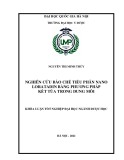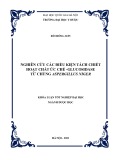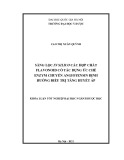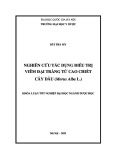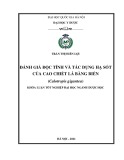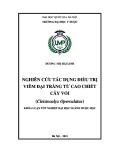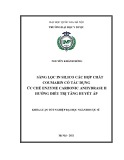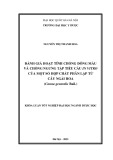
1
Summary
The stock market is a channel for mobilizing medium to long-term capital for the
economy and is an investment channel which attracts the attention of the authorities,
domestic and foreign investors. Vietnam’s stock market has experienced over 16 years
of establishment and development. There were periods when the stock market grew
too fast (especially in the period of 2006 - 2007), only totake the plunge in 2008-2009,
which affected investors, securities companies and financial services providers. The
volatility of the stock market is subject to many factors among which are the
macroeconomic factors, especially the central bank's monetary policy which plays an
important role.
This dissertation was conducted to study the impact of monetary policy on the stock
market during the period 2002 – 2016 using monthly time data collected from reliable
sources. Specifically: (i) study the impact of monetary policy (money supply,
interbank interest rate) on the stock market in Vietnam (measured by VN-Index); (ii)
study the impact of monetary policy (money supply, interbank interest rate) on
Vietnam’s stock market liquidity (measured by 4 characteristics). The regression
models used are the SVAR and VAR models based on the Eviews 8.0 software, and
the research results show that:
(1) During the study period, the relaxing (tightening) of monetary policy by the SBV
had the effect of increasing (decreasing) stock price immediately after 2 months and
lasting up to 6 months later. The variance decomposition shows that from January
2002 to December 2007, the impact of monetary policy on the stock market was not as
strong as in the period from January 2008 to December 2016.
(2) In addition, when SBV relaxes (tighten) the monetary policy by increasing
(decreasing) the money supply, the liquidity of Vietnam stock market increases
(decreases). The results of variance decomposition show that the money supply and
interbank rates explain 8% - 10% of volatility of liquidity (or illiquidity) after a period
of 9-12 months . The remaining variables explain 6% - 9% volatility of liquidity
variables in shorter windows (only 3 months).
(3) Indicating the impact of monetary policy on stock prices: when SBV increases the
total means of payment (or money supply), this reduces the mobilizing interest rate of
commercial banks, making investment in securities more appealing and shooting up
the demand for shares. In addition, falling interest rates also reduces the cost of
borrowing from businesses, thereby stimulating businesses to increase investment,
expanding production and profit is expected to increase and so do stock prices.







